Abstract
1. Chloroquine diphosphate (15 mg base kg-1) was given by constant rate intravenous infusion to two groups of Thai subjects. Eleven were patients with malaria (10 with Plasmodium vivax and one case with Plasmodium malariae) and 10 were healthy normal volunteers. 2. Plasma and packed red-cell concentrations of chloroquine, electrocardiographic intervals, arterial blood pressure and pulse were measured at frequent intervals. 3. Peak plasma concentrations at the end of the infusion ranged from 979 to 2,900 ng ml-1 in the malaria patients. In the group of healthy subjects the range was 550-2,200 ng ml-1. Values for terminal elimination rate constant, (lambda z) plasma clearance (CL), initial volume of distribution (V1) and volume of distribution at steady state (Vss) were calculated. For the healthy subjects, mean estimates of these parameters were lambda z = 0.062 +/- 0.030 day-1, CL = 597 +/- 238 ml min-1, V1 = 0.66 +/- 0.71 l kg-1 and Vss = 132 +/- 50 l.kg-1 For the group of malaria patients, the corresponding values were lambda z = 0.055 +/- 0.032 day-1, CL = 535 +/- 246 ml min-1, V1 = 0.74 +/- 0.75 l kg-1 and Vss = 136 +/- 64 l kg-1 There was no statistically significant difference in the estimates for any parameter between groups (P less than or equal to 0.05). 4. Chloroquine concentrations in packed red blood cells consistently exceeded those in plasma and showed no consistent change with time throughout the period of study in either group. The median value for the red cell to plasma ratio was between 3 and 4 in each group.(ABSTRACT TRUNCATED AT 250 WORDS)
Full text
PDF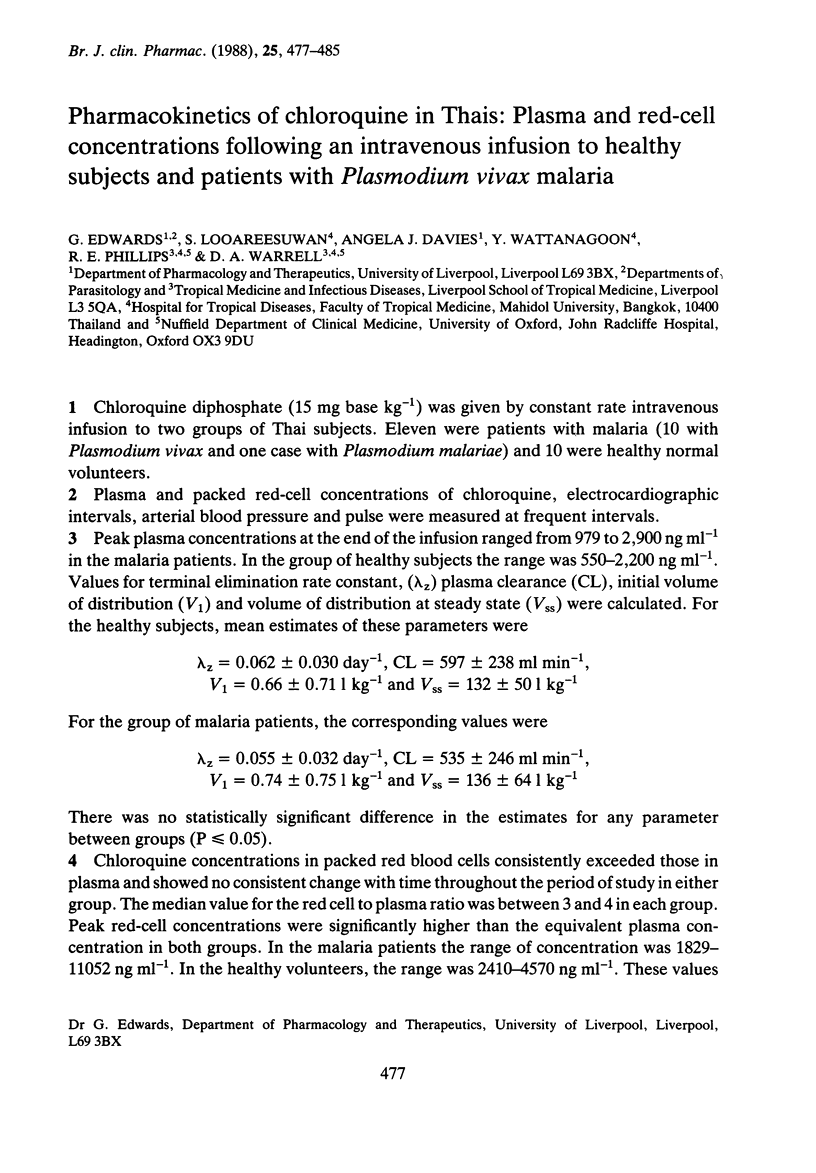
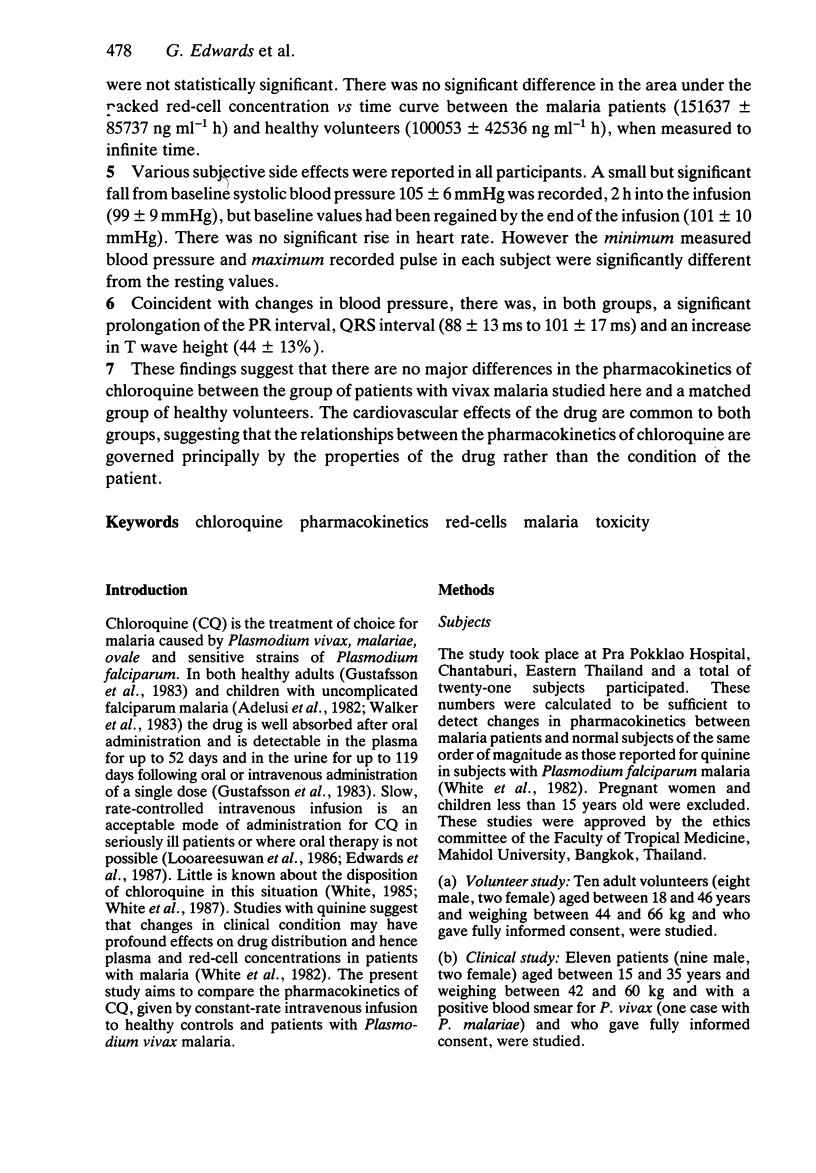
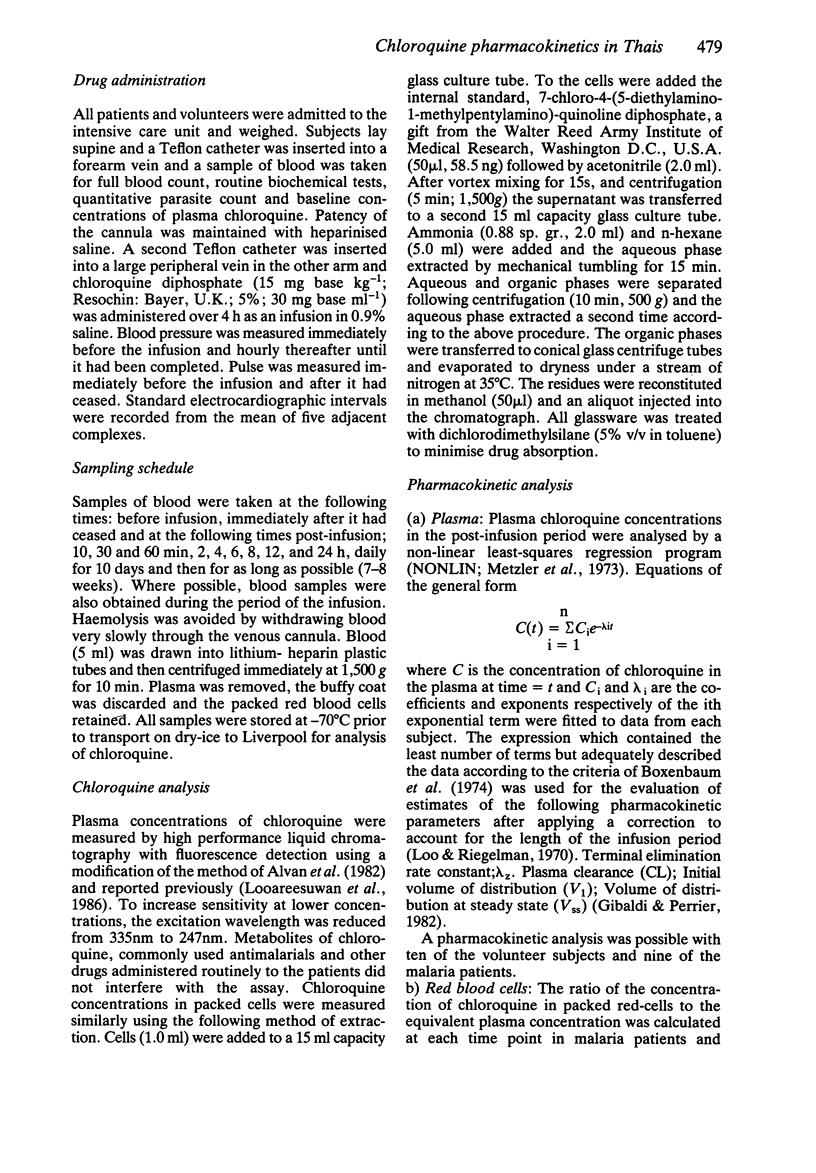
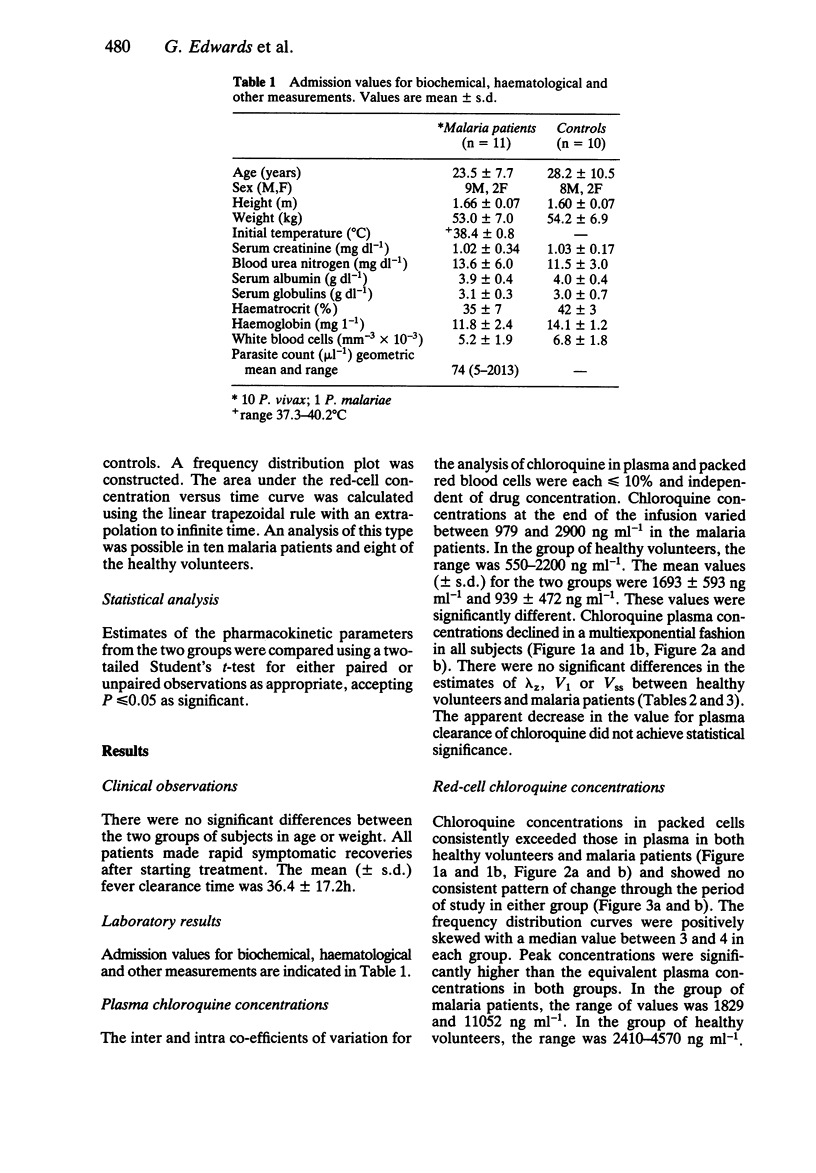
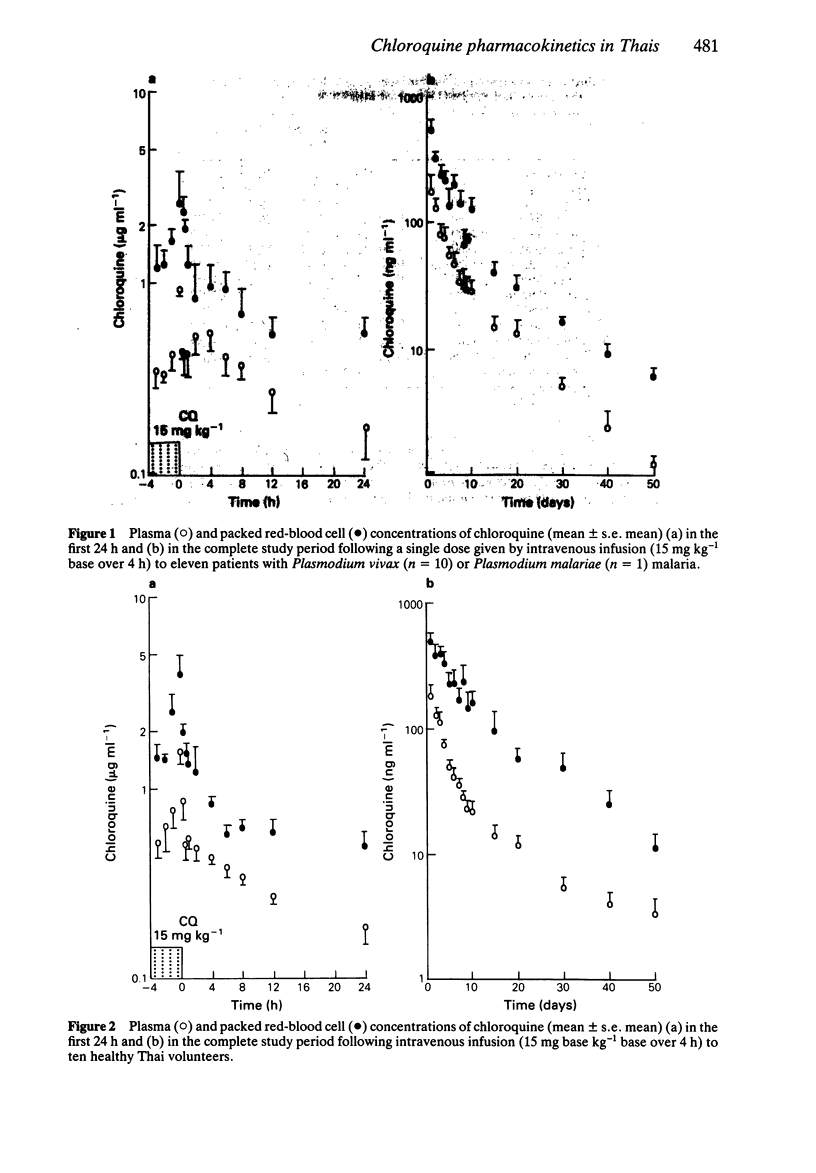

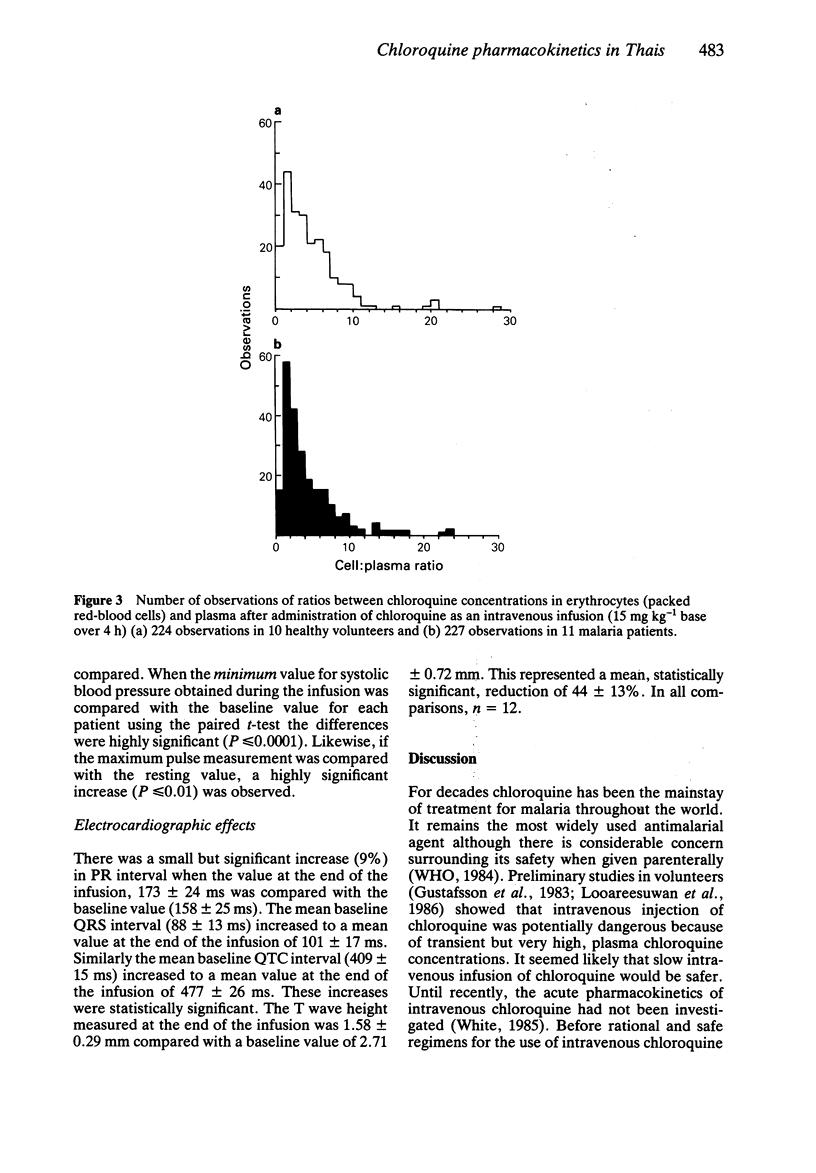
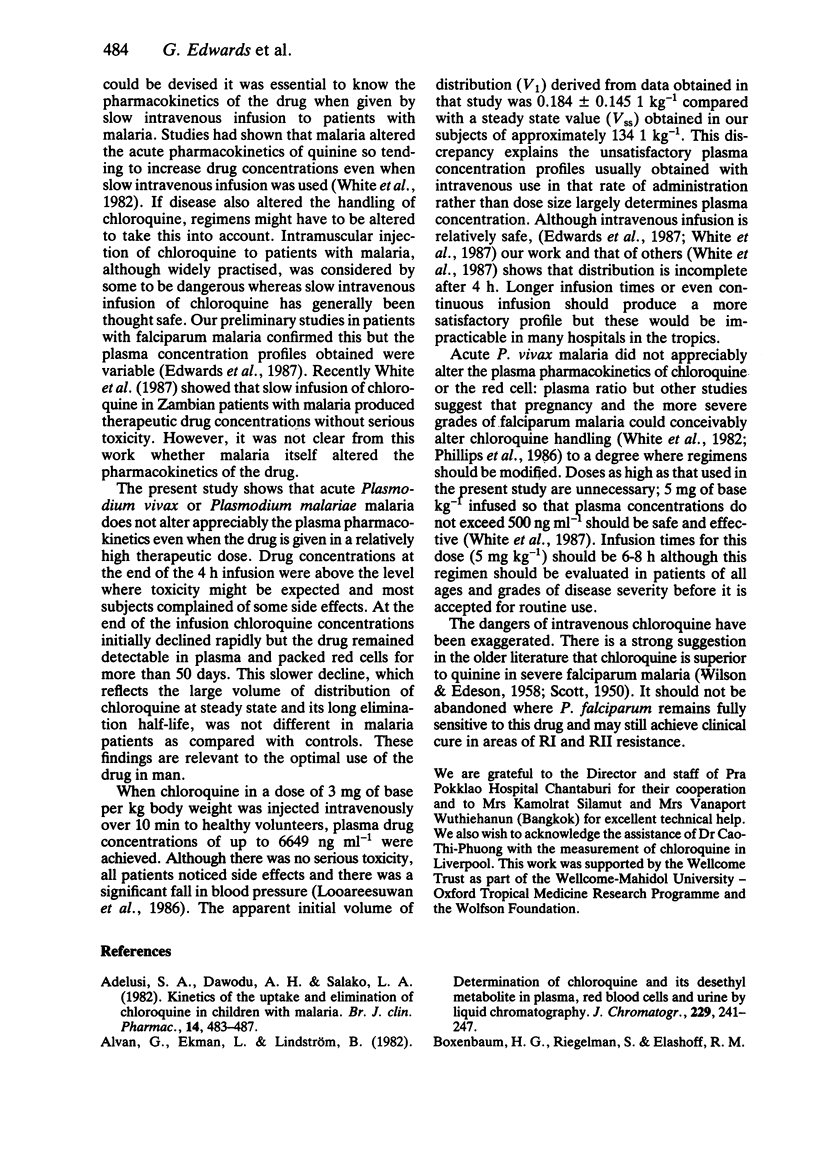
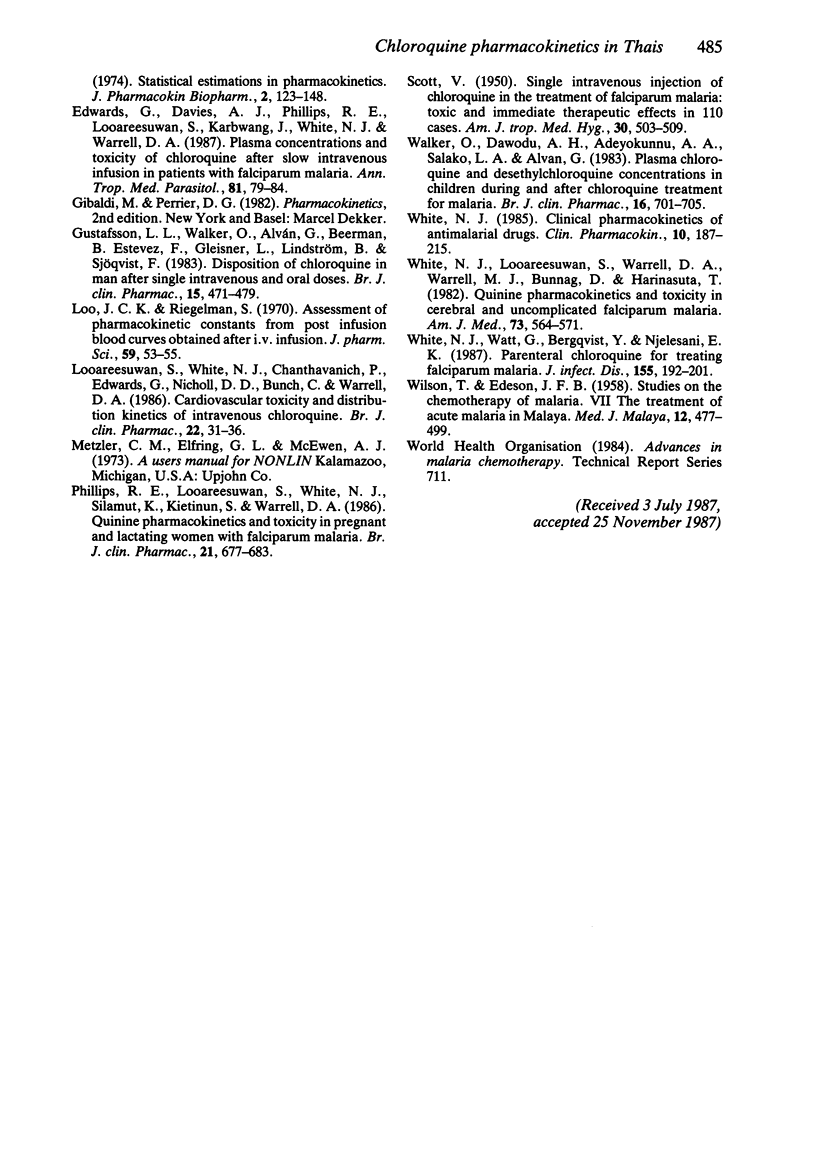
Selected References
These references are in PubMed. This may not be the complete list of references from this article.
- Adelusi S. A., Dawodu A. H., Salako L. A. Kinetics of the uptake and elimination of chloroquine in children with malaria. Br J Clin Pharmacol. 1982 Oct;14(4):483–487. doi: 10.1111/j.1365-2125.1982.tb02016.x. [DOI] [PMC free article] [PubMed] [Google Scholar]
- Alván G., Ekman L., Lindström B. Determination of chloroquine and its desethyl metabolite in plasma, red blood cells and urine by liquid chromatography. J Chromatogr. 1982 Apr 16;229(1):241–247. doi: 10.1016/s0378-4347(00)86059-4. [DOI] [PubMed] [Google Scholar]
- Edwards G., Davies A. J., Phillips R. E., Looareesuwan S., Karbwang J., White N. J., Warrell D. A. Plasma concentrations and toxicity of chloroquine after slow intravenous infusion in patients with falciparum malaria. Ann Trop Med Parasitol. 1987 Apr;81(2):79–84. doi: 10.1080/00034983.1987.11812098. [DOI] [PubMed] [Google Scholar]
- Gustafsson L. L., Walker O., Alván G., Beermann B., Estevez F., Gleisner L., Lindström B., Sjöqvist F. Disposition of chloroquine in man after single intravenous and oral doses. Br J Clin Pharmacol. 1983 Apr;15(4):471–479. doi: 10.1111/j.1365-2125.1983.tb01532.x. [DOI] [PMC free article] [PubMed] [Google Scholar]
- Loo J. C., Riegelman S. Assessment of pharmacokinetic constants from postinfusion blood curves obtained after I.V. infusion. J Pharm Sci. 1970 Jan;59(1):53–55. doi: 10.1002/jps.2600590107. [DOI] [PubMed] [Google Scholar]
- Looareesuwan S., White N. J., Chanthavanich P., Edwards G., Nicholl D. D., Bunch C., Warrell D. A. Cardiovascular toxicity and distribution kinetics of intravenous chloroquine. Br J Clin Pharmacol. 1986 Jul;22(1):31–36. doi: 10.1111/j.1365-2125.1986.tb02876.x. [DOI] [PMC free article] [PubMed] [Google Scholar]
- Phillips R. E., Looareesuwan S., White N. J., Silamut K., Kietinun S., Warrell D. A. Quinine pharmacokinetics and toxicity in pregnant and lactating women with falciparum malaria. Br J Clin Pharmacol. 1986 Jun;21(6):677–683. doi: 10.1111/j.1365-2125.1986.tb05233.x. [DOI] [PMC free article] [PubMed] [Google Scholar]
- SCOTT V. Single intravenous injections of chloroquine in the treatment of falciparum malaria: toxic and immediate therapeutic effects in 110 cases. Am J Trop Med Hyg. 1950 Jul;30(4):503–510. doi: 10.4269/ajtmh.1950.s1-30.503. [DOI] [PubMed] [Google Scholar]
- WILSON T., EDESON J. F. Studies on the chemotherapy of malaria. VII. The treatment of acute malaria in Malaya. Med J Malaya. 1958 Mar;12(3):471–499. [PubMed] [Google Scholar]
- Walker O., Dawodu A. H., Adeyokunnu A. A., Salako L. A., Alvan G. Plasma chloroquine and desethylchloroquine concentrations in children during and after chloroquine treatment for malaria. Br J Clin Pharmacol. 1983 Dec;16(6):701–705. doi: 10.1111/j.1365-2125.1983.tb02244.x. [DOI] [PMC free article] [PubMed] [Google Scholar]
- White N. J. Clinical pharmacokinetics of antimalarial drugs. Clin Pharmacokinet. 1985 May-Jun;10(3):187–215. doi: 10.2165/00003088-198510030-00001. [DOI] [PubMed] [Google Scholar]
- White N. J., Looareesuwan S., Warrell D. A., Warrell M. J., Bunnag D., Harinasuta T. Quinine pharmacokinetics and toxicity in cerebral and uncomplicated Falciparum malaria. Am J Med. 1982 Oct;73(4):564–572. doi: 10.1016/0002-9343(82)90337-0. [DOI] [PubMed] [Google Scholar]
- White N. J., Watt G., Bergqvist Y., Njelesani E. K. Parenteral chloroquine for treating falciparum malaria. J Infect Dis. 1987 Feb;155(2):192–201. doi: 10.1093/infdis/155.2.192. [DOI] [PubMed] [Google Scholar]


